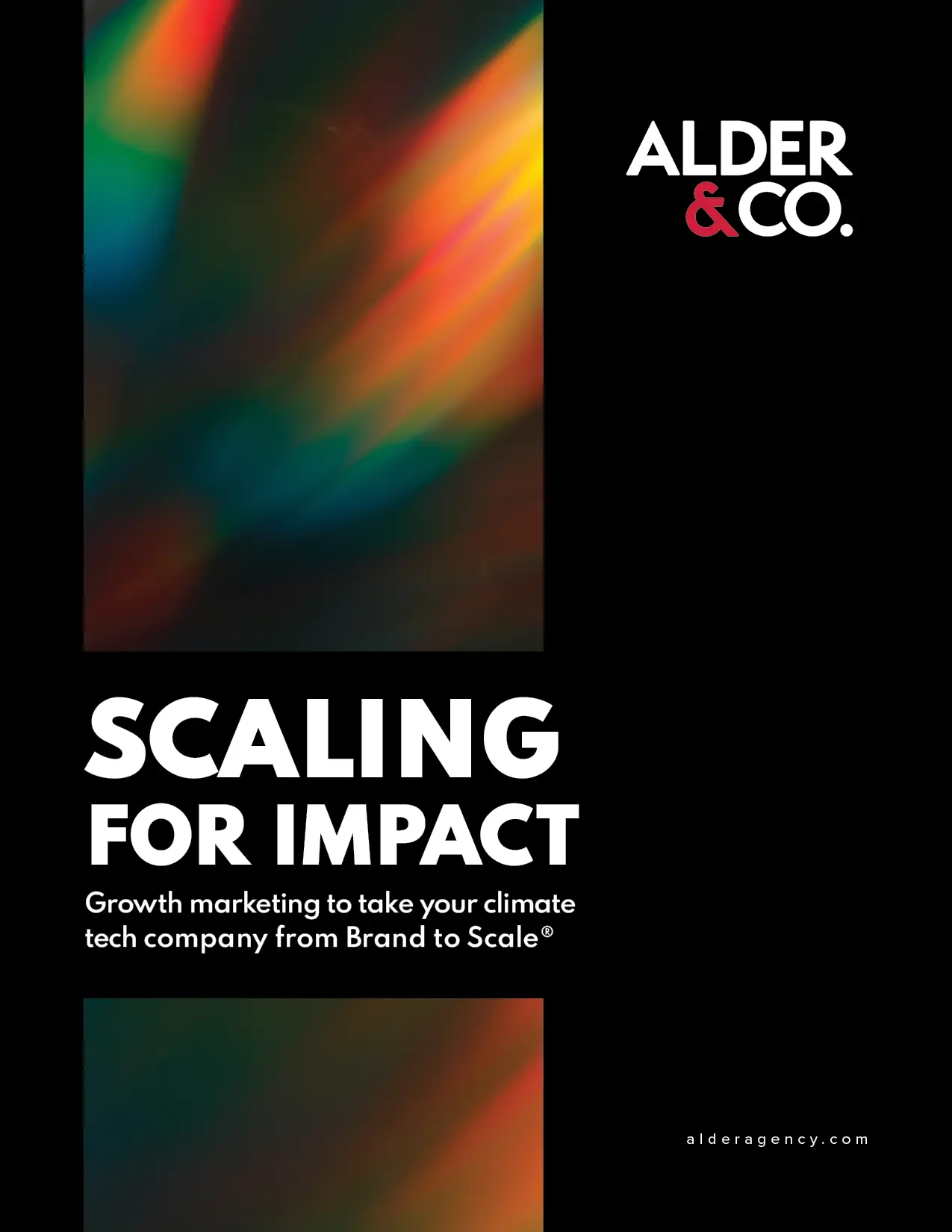Read this article on how to get into the habit of reading wider climate tech industry news, attending events, and networking with your climate tech marketing peers to become a climate tech marketing generalist.
Picture this scenario: You’ve been an in-house marketer at a climate tech company for a couple of years. Your company’s technology, and the market you operate in, are deeply technical and complex—like, say, grid management or battery technology.
That was daunting when you first started your job, but now you’ve become an expert in your field. You know all the buzzwords, acronyms, and relevant players in your niche. Congratulations!
And then something happens—your company gets acquired, your marketing budget gets cut, or you simply want a new challenge—and you find yourself in the hunt for your next climate tech marketing job.
And suddenly you realize: you’ve overspecialized!
As a result, your employability as a climate tech marketer is low. Don’t let it get to this point.
Why it’s important to be a climate tech marketing generalist
Climate tech is a growing industry. According to Net Zero Insights, in 2023 investors poured $72.9 billion into businesses dedicated to resolving the climate crisis.
Its technologies and applications are broad and complex—from renewable energy to ag-tech to water to buildings to transportation to… the list is almost endless.
Yet, compared to other industries—such as tech in general, or e-commerce, or health tech—climate tech is still nascent. This means the industry is immature when it comes to marketing, and the pool of experienced climate tech marketers is small. This is both an opportunity and a challenge if you’re on the hunt for your next job.
You’ll have an advantage if you have relevant experience in climate tech. But not if it’s too niche.
Secondly, because climate tech marketing is immature (and often underfunded), you may not have had the chance to strategize and deploy all the latest marketing tactics and technologies in your current role.
But you might end up competing against job applicants from more mature industries, like Software-as-a-Service (SaaS) tech, who want to pivot into climate. These folks are more likely to have built demand generation machines based on account-based-marketing and intent data underpinned by the latest marketing automation software.
If these buzzwords make your head spin, then you know why staying on top of marketing trends is just as important as knowing about climate tech industry trends.
Staying on top of climate tech industry trends and marketing trends
1. Consult media outlets and newsletters
For wider news around the environment, climate, and policy, subscribe to industry-specific newsletters from leading national dailies, such as Climate Fwd, a weekly newsletter from the New York Times climate team, Bloomberg Green, or Axios’ section on energy & environment.
For climate tech but without going into any niche, consider Canary Media, Cleantechnica, and the Trellis group’s various newsletters.
Sustainable Brands is great for the intersection between sustainable brands, technology and marketing.
When it comes to marketing trends, MarketingProfs is one of our favorites, alongside the MarketingBrew newsletter. B2B marketing is also great, albeit a little Europe-centric.
2. Attend industry events
With most events still being held virtually due to the pandemic, it’s now easier than ever to join industry events from the comfort of your home office without paying a whopping fee for travel and/or attendance.
Try to attend at least one climate tech event per week (from leading industry conferences such as Trellis’ Verge to smaller events led by investors, incubators, or non-profits). Don’t forget to follow-up and build your network (see point 3 below). Similarly for marketing, we suggest attending at least one marketing event per month to hear from marketing leaders from other industries and broaden your horizon (check out MarketingProfs or B2B Marketing—as above).
3. Tap into your peers
Finally, don’t underestimate the power of your network. Check out what your peers are talking about—either here on ToFu or on LinkedIn; follow climate tech influencers on your social platform of choice, or join relevant climate tech groups, including the New Energy Network and My Climate Journey.
Try to schedule a 1:1 networking meeting with someone you consider a mover-and-shaker in climate tech or marketing at least once a month and ask them what’s top of their mind.
Bag your next climate marketing job by being a well-rounded industry expert and marketing generalist
Climate tech marketers must constantly balance being an expert on their own company’s hyper complex technology and a grounding in industry trends that make that technology relevant for a wider audience. The same applies to your profile as a climate marketing job candidate—only if you can demonstrate that you can dive deep into technologies while also understanding how your future employer’s business links to the bigger picture—which is ultimately saving the planet—you’ll convince your future boss that you’re the right person for the job.
If you enjoyed this post, you should probably join Tofu. That’s our climate tech marketing newsletter and 1000+ member slack community, where this article originally appeared. Sign up now!


